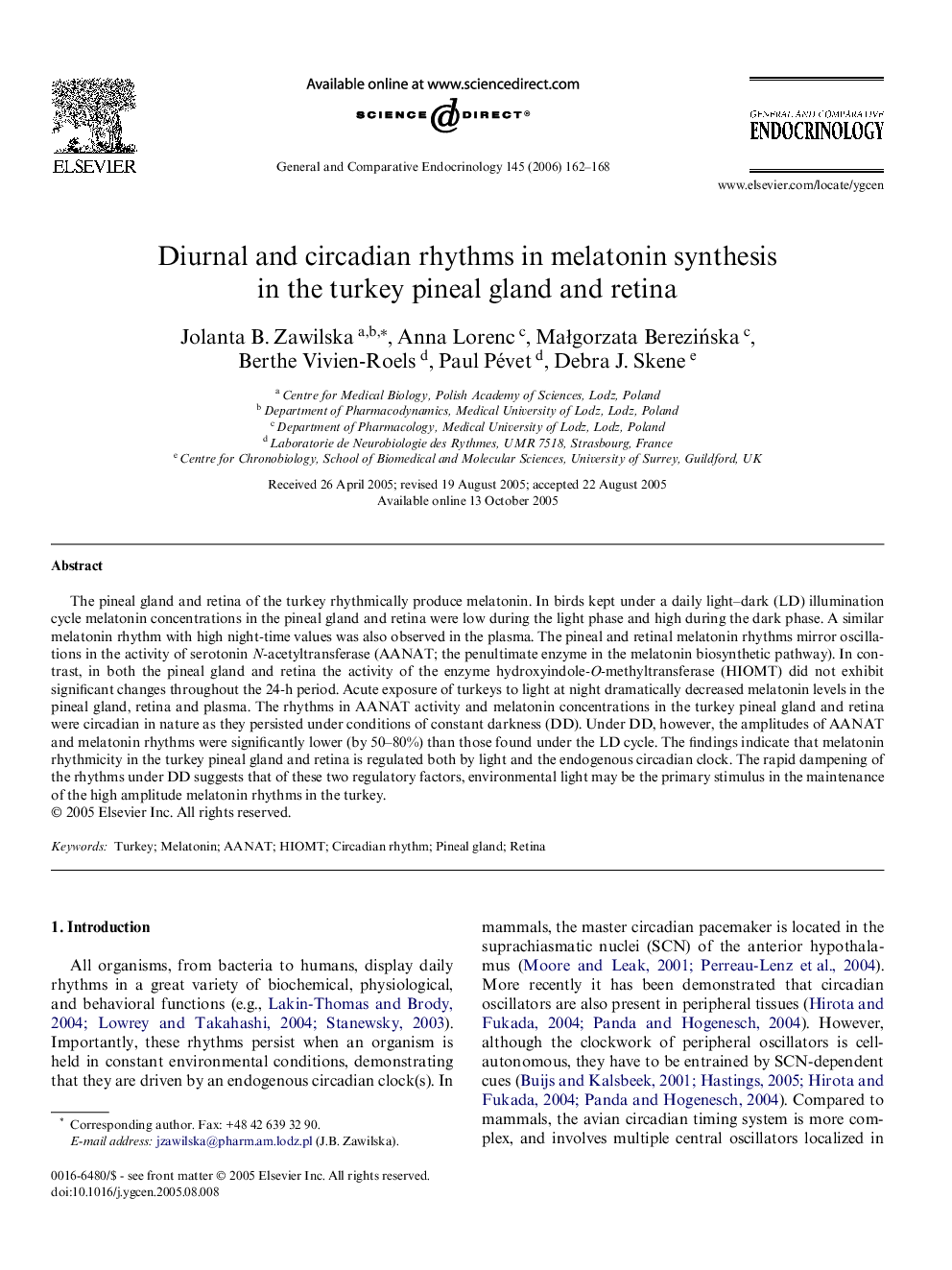| Article ID | Journal | Published Year | Pages | File Type |
|---|---|---|---|---|
| 2802243 | General and Comparative Endocrinology | 2006 | 7 Pages |
The pineal gland and retina of the turkey rhythmically produce melatonin. In birds kept under a daily light–dark (LD) illumination cycle melatonin concentrations in the pineal gland and retina were low during the light phase and high during the dark phase. A similar melatonin rhythm with high night-time values was also observed in the plasma. The pineal and retinal melatonin rhythms mirror oscillations in the activity of serotonin N-acetyltransferase (AANAT; the penultimate enzyme in the melatonin biosynthetic pathway). In contrast, in both the pineal gland and retina the activity of the enzyme hydroxyindole-O-methyltransferase (HIOMT) did not exhibit significant changes throughout the 24-h period. Acute exposure of turkeys to light at night dramatically decreased melatonin levels in the pineal gland, retina and plasma. The rhythms in AANAT activity and melatonin concentrations in the turkey pineal gland and retina were circadian in nature as they persisted under conditions of constant darkness (DD). Under DD, however, the amplitudes of AANAT and melatonin rhythms were significantly lower (by 50–80%) than those found under the LD cycle. The findings indicate that melatonin rhythmicity in the turkey pineal gland and retina is regulated both by light and the endogenous circadian clock. The rapid dampening of the rhythms under DD suggests that of these two regulatory factors, environmental light may be the primary stimulus in the maintenance of the high amplitude melatonin rhythms in the turkey.
